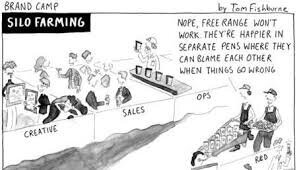Crafted Reading List: The Five Dysfunctions of a Team
“Not finance. Not strategy. Not technology. It is teamwork that remains the ultimate competitive advantage, both because it is so powerful and so rare.”
“Great teams do not hold back with one another. They are unafraid to air their dirty laundry. They admit their mistakes, their weaknesses, and their concerns without fear of reprisal.”
Why We Like It
There are a few reasons I liked this book. First, it is a very quick and easy read that has a great way of making the author’s points quickly. He spins some dry business content into an interesting and compelling story. Secondly, the five dysfunctions are poignant and worth diving into. Lencioni does a great job framing the dysfunctions and showing how the team works through them.
Key Takeaway
Finally, the most important takeaway I had from the book was the realignment of what the “team” is and how resetting current thoughts can help you break down silos. Lencioni points out, a very accurate insight, that most people view their team as a vertical hierarchy mostly delineated by departments or skillset. Meaning most people think their team is Marketing, Sales, Finance, Product Management, or Engineering, etc. etc. This leads to fiefdoms, silos, and protectionism. Leaders and Individual Contributors are then guilty of many behaviors that inhibit progress. Vertical teams will praise their own work, discount other teams, and place blame on other departments. Lencioni points out that to get better cross-functional team collaboration the “team” needs to be more aligned horizontally. Since cross-functional teams will be the units working together in collaborative situations that is how the team should be defined. I.E. Senior Leadership, VPs, Directors, Managers, and ICs should think of their “team” as people at a similar strategic level working on the same problems. For example, if the VP of Product and the VP of Engineering are misaligned and driving their messages to their direct reports what are the chances that the teams below them will be aligned and pointed at the right outcomes?
While this may seem obvious, I see much more of the former than the latter. When we conduct stakeholder interviews, it is very common to hear the stakeholder praise the skills, knowledge, and accomplishments of their team while stating a lack of trust or confidence in other teams. The exact scenario that Lencioni highlights!




